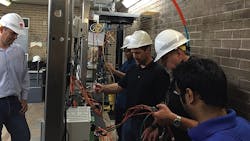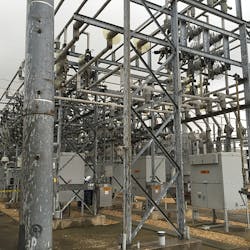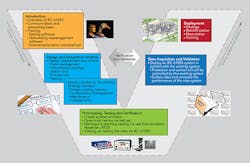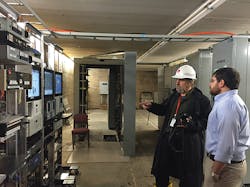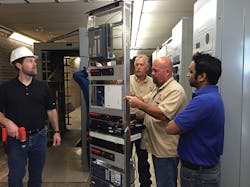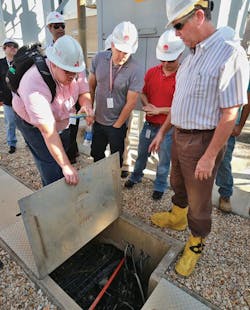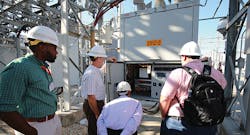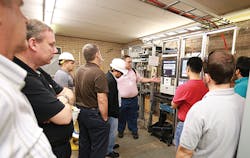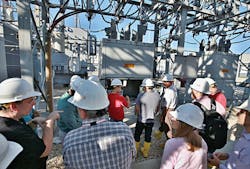Interoperability Testing of Substation Equipment
How soon can I get my power back on?” This is the most frequently asked question utility call centers get when the power is out. In emergency situations and after natural disasters, it is crucial the utility be able to restore all the affected substations quickly while maintaining the reliability and stability of the grid.
Historically, powerful hurricanes and superstorms have battered the regions served by Entergy. August 2015 marked the 10-year anniversary of Hurricane Katrina, one of the most significant natural disasters to hit New Orleans, Louisiana, U.S. It was a catastrophe for residents and companies in the city. Around 260 Entergy substations and 1,550 feeders were damaged by Hurricane Katrina.
Storm hardening and grid resiliency have never been more important for Entergy, which has received multiple awards and recognition for storm-recovery efforts. Furthermore, the utility always explores multiple ideas, and is determined to improve the recovery time of affected facilities and restore power back to customers as quickly as possible. Recently, the utility has begun designing mobile control houses and raised control houses for certain substations in Louisiana to address the flooding challenges there.
Paradigm Shift
At Entergy Transmission Engineering, a group of young and enthusiastic engineers thinks there should be a paradigm shift in how future substations are designed and built: smarter, leaner and more secure.
In early 2014, Entergy Transmission took the initiative to further explore IEC 61850 to evaluate the suitability and benefit of this standard for the next-generation substation and grid with an eye to high resiliency from natural disasters. With the implementation of the IEC 61850 and IEC 61869 standards, data communications within the control house and substations are much more lean and organized.
Compared to the traditional copper-cable-based design, the new fiber-optic-based process bus technology promises to provide better flood resistance, superior safety performance and much faster storm recovery for the protection, control and automation infrastructure in substations. Furthermore, the fiber-optic-based solution will minimize copper wire use, which should not only reduce the construction and maintenance
cost but also optimize the design and configuration process.
First Steps
A future-substation core group consisting of protection and control engineers, field/grid engineers and technicians, and operation information technology (OIT) and transmission management was formed to perform research and development of the new fiber-optic-based process bus technology.
In addition, a multi-vendor lab was developed in collaboration with vendor product support and technical support. It is essential to perform test and analysis in the lab environment before deploying a new system to the substation. In addition, with some of the products still in the prototype stage, the Entergy lab serves as an open platform test environment for vendors’ engineers to integrate their devices with others. This lab also serves as a training center for Entergy engineers to learn and be trained on new software, hardware and communications protocol related to IEC 61850. To promote strong teamwork and a results-focused culture in the core group, a three-pronged mission was embraced:
- Interoperable — To create a system that is interoperable among multiple vendors
- Sustainable — To ensure knowledge and skill set retention within the utility, maintaining the project vision, momentum and direction.
- Transparent — To create an open and transparent environment where goals and knowledge are shared and achieved together.
A well-organized plan, termed the “V model,” was created to assist the core team in pursuing this venture strategically and smoothly. It was known multiple challenges would arise in introducing and integrating any new concept and culture into the existing grid.
Plugfest I
The Entergy core team has held system integration events, termed “Plugfest,” to bring subject-matter experts from each collaborator to meet at the Entergy Future-Substation Lab to configure and validate all the devices to be integrated into one stable network.
Plugfest 1 was hosted together with ABB, Alstom, Schweitzer Engineering Laboratories, Siemens and OMICRON in June 2014 with the objective of learning about and understanding IEC 61850. During Plugfest 1, the subject-matter experts from each vendor configured their devices to communicate with other vendors’ devices. They also hosted multiple training sessions with Entergy engineers on commissioning testing, communications protocol, and other benefits and concerns with this standard.
On the last day of the Plugfest 1, a simple feeder protection scheme demonstration was performed in which fault current was injected to one merging unit, which was subscribed to by only one feeder relay. Based on the simulated faults, the feeder relay then initiated a trip, block or breaker fail message through the generic object-oriented substation event (GOOSE) to the main breaker. The successful demo provided attendees with the general concept of and differences between the IEC 61850 systems and the conventional system.
A lessons-learned session was hosted by Entergy’s core team with the collaborating vendors to brainstorm and document the challenges, solutions and future plans. It was during this session that a parallel IEC 61850 data acquisition system was proposed by the core team to be installed as a pilot in Entergy’s Joliet substation, so the results of both systems could be quantified and compared by the end of testing.
Plugfest 2
Plugfest 2 was hosted in March 2015 together with ABB, Alstom, Siemens, OMICRON and Doble. The objective of this event was to configure all the intelligent electronic devices (IEDs) matching all the protection requirements of the selected pilot substation while also being able to communicate among the IEDs from each vendor. All the involved IEDs had to be compatible with the IEC 61850 Standard Edition 2, IEEE 1588 and parallel redundancy protocol (PRP). Only the IEDs tested and qualified in the lab were allowed to be deployed to the Joliet substation.
Throughout Plugfest 2, Entergy engineers and technicians were invited to shadow the vendor application engineers in configuring and debugging the IEDs. Although the team faced some interoperability hurdles, it was a good experience for Entergy engineers in learning how to debug and analyze the challenges that occurred. As a result, a brainstorming session was performed to document the difficulties encountered, so these important details and information could be feedback for the collaborators’ research and development department for improvement.
Plugfest 3
In June 2015, Plugfest 3 was hosted together with ABB, Alstom, Siemens, SUBNET, OMICRON and Doble to reintegrate all the IEDs from different vendors into one cohesive protection network. Based on lessons learned from Plugfest 2, vendors had addressed most of the challenges discovered during Plugfest 2. The IEDs were successfully integrated into one network with a redundant channel to prove PRP. In addition, all the protective functions of the IEDs were configured to match the settings in the Joliet substation’s pilot breaker relay.
During the technology demonstration, the overcurrent setting elements based on the pilot relay settings were tested by injecting the fault current simulated by the test sets to the merging units. All the pilot relays from different vendors operated accurately in multiple simulated scenarios.
Fiber Blowing
Fiber-optic cable installation is one area the Entergy core team had been researching. With the replacement of copper wires by fiber-optic cable, the installation of fiber plays an important role in future-substation building with regard to saving cost and time. The inner duct collaborator, Opti-Com, developed a prototype model that consists of an outer protective layer which is rugged and weatherproof. Fiber can be blown easily through the inner ducts via different installation methods. This application accelerates the installation and repair of fiber when needed.
Deployment Day
With the results obtained from Plugfest 3, the core team was confident the test system could be deployed to the substation. On Aug. 19, 2015, the pilot test racks were deployed to the station to perform data acquisition. Collaborating vendor application engineers also were present to provide support for the installation. Two different merging units were installed inside the feeder breaker cabinet where sample data was fed to the process bus network and was then subscribed to by the relays in the control house.
The vendors notified Entergy that these merging units are the first ones installed in a live substation in the U.S. (Alstom) and worldwide (Siemens).
At the moment, the goal is to allow the IEC 61850 system to protect the breaker in parallel with the conventional scheme so that the results of both systems can be analyzed and compared.
Sharing Experiences
In September 2015, a group of protection and communications subject-matter experts from eight utilities visited Joliet substation to exchange their experiences with this effort. The Entergy core team is all about learning and sharing, so the more the core team can learn and share with others, the faster and smoother the industry will move toward grid modernization.
At Entergy, the future-substation core team was organized to prove the interoperability of multi-vendor IEDs. Research and development will continue to further ensure the robustness and reliability of this technology. Findings and results of the pilot substation, lab and other analyses will be shared with the industry.
Chan Wong is a senior engineer at Entergy, primarily involved in transmission protection standard and substation automation. Since 2014, he has been leading the Entergy multi-vendor IEC 61850 effort and developed an integration lab to explore the state-of-the-art vendor IEDs. He has experience working on projects related to the NERC critical infrastructure protection, RTU configuration, relay automation and process improvement. Wong currently serves on the Entergy Technology Council.
Tammy Lapeyrouse is Entergy’s director of transmission engineering. She has more than 25 years of utility experience, covering a variety of engineering fields in transmission planning, transmission policy, system protection and control, transmission project development and substation design. Lapeyrouse holds a BSEE degree from Tulane University and has taught power system reliability courses at Tulane University and the University of New Orleans. She is a member of the IEEE Power & Energy Society and serves as a director of the IEEE New Orleans section.
